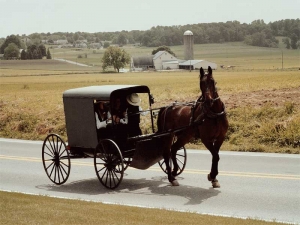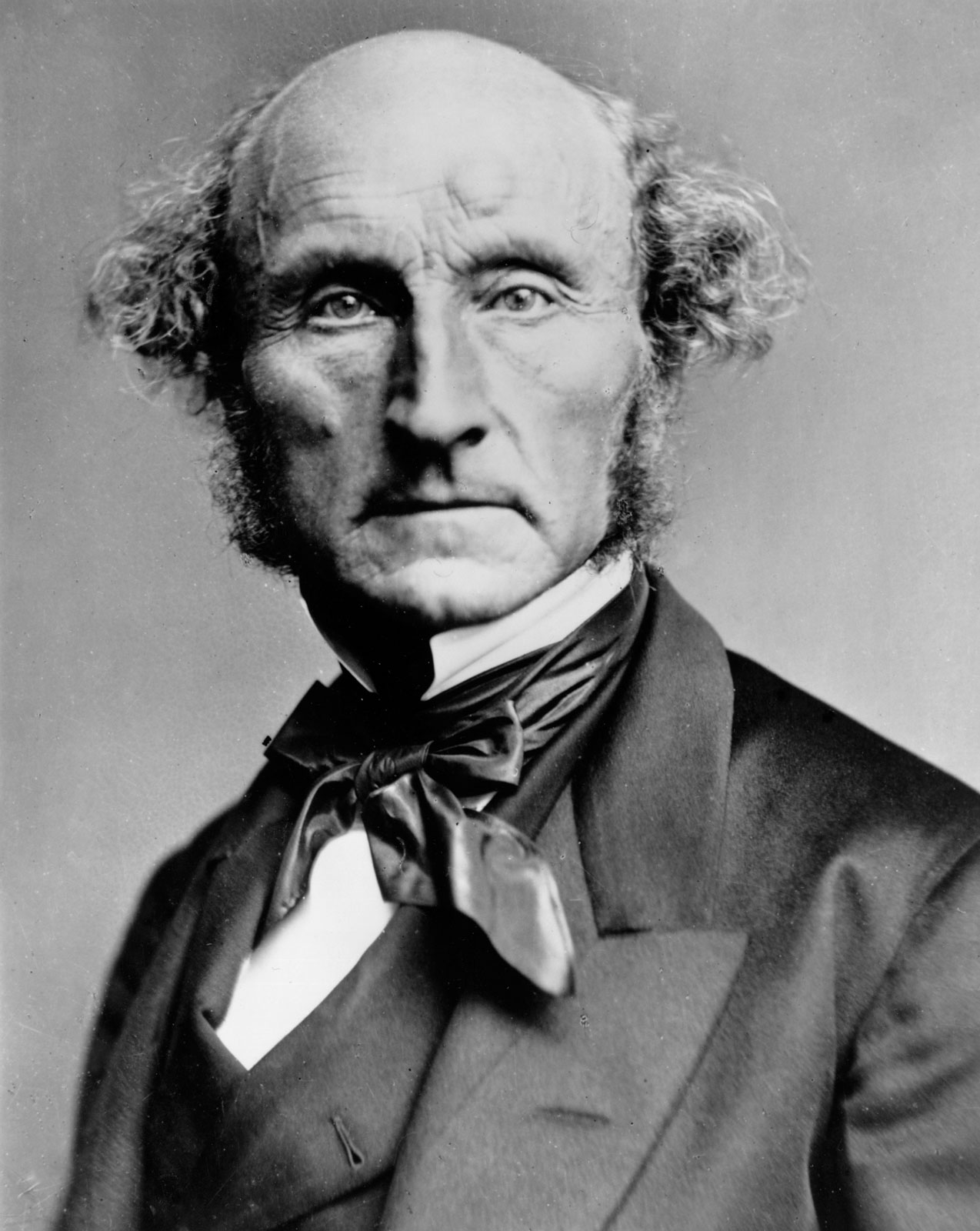Can compulsory formal education be justified on liberal grounds? Christina Easton on J. S. Mill, John Rawls and the famous Wisconsin v. Yoder court case.
John Stuart Mill declared it “almost a self-evident axiom” that all children must be educated. This view is held in common with other liberals, who tend to agree that education should be compulsory for minors in some form. However, here the agreement stops and some seemingly intractable problems arise. Education is a means to liberty in later life, but what should we do when imposing education conflicts with present liberties? And how can the liberal be consistent in valuing a diversity of views at the same time as advocating compulsory education, for the moment we state what must be compulsory, we bring in a controversial vision of “the good education”?
These issues came to a head in the famous court case of Wisconsin v. Yoder (1972). A number of Amish parents (represented by Yoder) objected to the Wisconsin state law requiring school attendance until age sixteen. The Amish did not object to schooling up until fourteen, as this could take place in local, Amish schools. But the further two years required attendance at High School, exposing the children to an ethos in conflict with Amish values. Instead of High School, Amish teenagers continue their education informally within the community in agricultural work (for men) and domestic work (for women).
The court ruled in favour of Yoder, arguing that the Wisconsin law violated the parents’ right to freedom of religion by preventing them bringing up their children in the separation and simplicity essential to Amish life. Many liberals think that the court judgment should have gone the other way. In their view, it is justifiable for the state to impose a law requiring that Amish children be exposed to diverse values and ways of living.

The Amish, a subsect of the Anabaptist Christian movement, intentionally segregate themselves from other communities as a part of their faith, and maintain a lifestyle without electronic devices or other modern conveniences.
[By it:Utente:TheCadExpert/ CC-BY-SA-3.0, via Wikimedia Commons (tinted from original)]
The Value of Diversity
In On Liberty, Mill extols the value of diversity in contributing to society’s long-term happiness. Just as different environmental conditions are required for optimal growth of different plants, so will a variety of “experiments of living” enable diverse individuals to be the best that they can be. It would be wrong to assume that Amish children are all the same; they need to encounter a variety of options so they can decide which ways of life best suit their character.
A similar opinion was voiced by Justice Douglas, delivering the dissenting opinion in court. He appealed to “the right of students to be masters of their own destiny” and argued that to keep the child from experiencing the variety of High School means “the child will be forever barred from entry into the new and amazing world of diversity that we have today”.
More recently, the legal philosopher Joel Feinberg has argued in favour of Wisconsin on the basis that the liberal state should be neutral; it “would act to let all influences, or the largest and most random possible assortment of influences, work equally on the child, to open up all possibilities to him”.
Illiberal liberalism
The trouble with these views is that whilst they are liberal in the sense of being open to a variety of views of “the good life”, in another sense they are deeply illiberal. They ignore that there is disagreement in society not just about which view of “the good life” to accept, but also on the more fundamental question of whether we should be valuing autonomy and diversity at all.
Feinberg justifies a diverse education by appealing to “maximising…chances for self-fulfilment”, but he assumes that self-fulfilment requires the exercise of autonomy. Yet from an Amish perspective, exposure to diversity could rule out eternal fulfilment in the afterlife. Feinberg’s view is therefore far less “neutral” than he claims. Indeed, Mill’s vision of “open, fearless characters and logical, consistent intellects” is no doubt anathema to Amish parents, who value submission and meekness.
Whilst it may be clear to some liberals that exposure to diversity will benefit Amish children by enriching their available options, this justification will have little appeal to the Amish. It may even appear to them that forced exposure to diversity amounts to indoctrination into liberal values of autonomy and diversity.
A Rawlsian perspective
John Rawls argued that if liberals are really concerned with respecting persons in the face of disagreement, then any coercive education policy should be justified by public reasons. These are reasons which any reasonable person can accept; they are not based in controversial views of the good life. Rawls criticised Mill for resting his liberalism “in a large part on ideals and values that are not generally…shared”.
So, can we, in the spirit of Rawls, justify exposing children to diversity against the will of their parents in a way that appeals only to public reasons?
Firstly, we might say that if citizens are to get along in spite of their disagreements, there needs to be exposure to diversity. In order to see disagreement as reasonable (or at least, to see that those with whom you disagree are not entirely irrational), we need to engage with those with whom we disagree. Such encounters also provide opportunities for mutual respect and solidarity to be cultivated between fellow citizens. This appeal to peaceful co-existence could be seen as a “public reason”, for it seems to be something that every reasonable person would want, regardless of their views of the good life.
Secondly, Rawls argued that education should develop the ability to “participate in [society’s] institutions”. Being an active citizen in the democratic process requires (at the least) some basic skills of rational deliberation, and one important way that these skills are taught is by engaging thoughtfully with different points of view.
Given the availability of public reasons such as these, perhaps Rawls must argue that the state should override the wishes of Amish parents. That this may be his view is indicated when Rawls says that “The unavoidable consequences of reasonable requirements for children’s education may have to be accepted, often with regret”.
Liberals today often view this Rawlsian-type justification as superior, since by making appeal to what all reasonable citizens value, it is “more neutral” than justifications appealing to autonomy and diversity. It is therefore better able to cope with the disagreement that is a feature of modern democracies.
A Millian defence
But “hold on”, says the defender of Mill. When Rawls says that his liberalism “requires far less” for education than Mill’s, this implies that Mill has a more demanding view of education. Yet this simply doesn’t fit with what Mill said. Mill argued that “A general State education is a mere contrivance for moulding people to be exactly like another”. He wanted “diversity of education”, not the education in diversity suggested by the justifications discussed above. Mill wanted the state to “leave to parents to obtain the education where and how they pleased”.
One might respond by saying that perhaps this isn’t what Mill should have said if he is to be consistent. Indeed, some of Mill’s comments lead us to think that his minimum requirements would not be fulfilled by the Amish education in agricultural and home-making skills. He says that children should be taught the knowledge required to draw conclusions on matters of controversy, and suggests that such knowledge be monitored by public examinations. Elsewhere, Mill talks about the need for a meaningful right of exit from Mormon communities, which might lead us to think that he would want Amish children to have an informed awareness of alternatives. (This might, perhaps, be fulfilled by the rumspringa, a practice in many Amish communities where older teenagers are allowed to experience alternative ways of life before making a decision about their own future.)
The Impossibility of Neutrality
Whatever the verdict on Mill, we can still press the point against Rawls by arguing that the public reason defence can hardly be called “neutral”. It’s not clear that an Amish person would accept the reasons proposed above; they might remind us that the Amish successfully achieve peaceful co-existence already, without engaging with those with whom they disagree. And they have no wish to participate in the democratic process, so have no need to develop the skills required for democratic deliberation.
But even if the Amish person does see the force of the “public reasons” above, that isn’t enough to achieve neutrality. For the public reason defence to work, exposure to diversity must be viewed as more important than the values that necessitate the life of separation. Yet this is precisely what the Amish want to resist, for their religious reasons are likely to weigh more heavily in their decision-making than the public reasons. Justifying the Wisconsin state law by appeal to public reasons might be neutral in avoiding relying on controversial views, but it fails to be fully neutral, since these reasons require a rejection of the truth and importance of some Amish beliefs.
Whatever view we take, reflecting on the case helps us realise that liberals need to be more cautious in making claims to neutrality, and be honest about where they fail in this aspiration.
We must also make sure that our arguments attend to the reality of the situation. Both the Millian and Rawlsian arguments invoked the importance of diversity. Yet the modern High School is not simply a melting pot of different ways of life. As Chief Justice Burger pointed out, High Schools tend “to emphasize intellectual and scientific accomplishments, self-distinction, competitiveness, worldly success, and social life”. The reality of peer pressure and the need to conform (particularly amongst teenagers) is likely to promote homogenisation of views.
So, if we were to change the law so as to require compulsory attendance, High School culture would have to undergo some dramatic changes. Schools would need to actively promote and exhibit a diverse range of ways of life, and this would need to be informed by an authentic understanding of Amish values. The school would also need to provide opportunities for majority values such as self-achievement to be questioned. The challenge for head teachers and policy-makers is to implement strategies that protect minorities from extraordinary pressure, without resorting to separation.
Christina Easton is a PhD student in LSE’s Department of Philosophy, Logic and Scientific Method. Her thesis concerns the legitimacy of promoting British values such as tolerance in schools. She tweets @ChrEaston.
Further Reading
- Feinberg, J. (1992). Freedom and Fulfillment. Princeton: Princeton University Press.
- Mill, J. S. (2006). On Liberty and The Subjection of Women. London: Penguin Classics.
- Rawls, J. (2005). Political Liberalism (Expanded Edition). New York: Columbia University Press.
- Ryan, A. (2011). J.S. Mill on Education. Oxford Review of Education 37, no.5, 653-667.
- Wisconsin v. Yoder (1972). 406 U.S. 205.
Featured image: Public domain / CC0 1.0






Great blog! I have a question regarding your final paragraph:
‘Schools would need to actively promote and exhibit a diverse range of ways of life, and this would need to be informed by an authentic understanding of Amish values.’
To what extent is this a) feasible and b) desired? It’s the second part (‘is this desired?’ I suppose I’m more interested in…)
To provide a parrallel example, concerning the science curriculum in schools, a similar argument (using the reasoning in the article used above) could be made to support the inclusion of intelligent design (ID) theory as an alternative theory for evolution. Most scientists clearly challenge the scientific credibility of ID and most support its absence in the curriculum. However to prevent homogoneisation and to ensure that all ‘the alternatives’ have been presented (and to protect the minority view) would the liberal have to support the inclusion of ID in the science curriculum? Personally, keeping ID out of the science curriculum is desirable. Whilst I recognise this is a ‘non-neutral’ view, my question follows is such diversity of opinion always desirable?
(I suppose an answer lies somewhere in the difference between the science curriculum, and what is being discussed here which seems more concerned with values… but it would be useful if you could point out how to seperate these two, especially as science as universally regarded as an essential part of a formal education)
Should liberals not concede and seek to pursue a more comprehensive liberal education agenda (promoting diversity/autonomy), rather than try and hide behind a veil of neutrality?
Thanks for the comment, Ben. I think I agree with you on everything you say here, but will continue to give it more thought.
Like you, I’m very sceptical about claims to neutrality (hence “liberals need to be more cautious in making claims to neutrality, and be honest about where they fail in this aspiration”). If anything, I would only advocate neutrality as an ideal to aspire towards, not a constraint on education policy. In this post, I’m more interested in the debate between comprehensive liberals and political liberals, rather than setting out my own views.
If I were to sign up to your last sentence, which is where I’ve been heading in my thought but am also still unsure about, I’d want to add (somewhat paradoxically) that the value of diversity and autonomy should itself be allowed to be questioned.
Like you, I wouldn’t support teaching ID in Science, and I’d add that
1) science teachers should do more to make clear the contentious nature of some scientific claims (whilst also being clear where wide consensus does exist, such as in the case of evolution by natural selection), since empirical research by myself and others has suggested that students tend to view science as making infallible, certain claims
2) it should be discussed in RE.